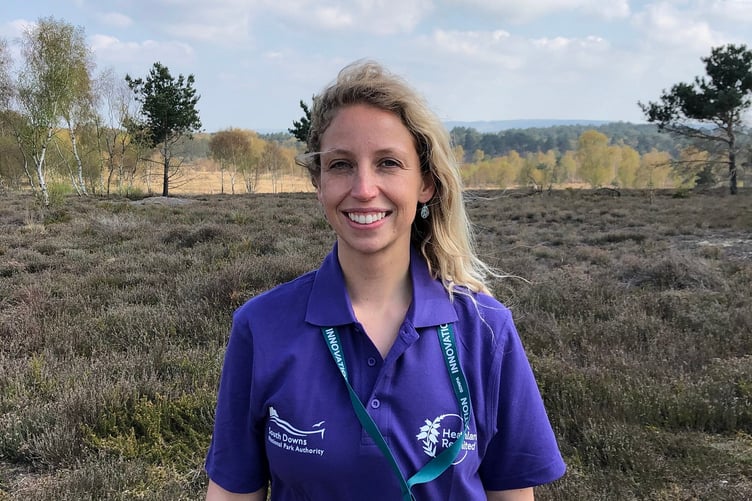You might have noticed all sorts of species emerging in the past few weeks both in gardens, verges and on our heaths, writes Olivia French, heathlands engagement officer for the South Downs National Park Authority.
As well as being a hub for ground nesting bird species, and all sorts of ground burrowing invertebrates, the Wealden Heath Special Protection Area that surrounds Whitehill and Bordon is also home to an impressive 12 out of 13 of the UK’s native amphibian and reptile species.
Sand lizards
The sand lizard is one of the UK’s rarest reptiles and as it favours sandy heathland and sand dunes, we’re lucky to find them on nearby heaths.
Right now, the males turn a striking bright green colour as they get ready to mate and the females are usually a pale sandy brown colour.
Slightly stockier than the common viviparous lizard, they have brown varied patterns along their bodies that almost look like leopard print, and a pale stripe down either side of their backs.

On a warm sunny day (still haven’t had many of those , have we?) you might spot them basking on a patch of bare sandy soil or a mossy section near the heather.
Sand lizards dig burrows into the sand for shelter and lay their eggs there in June and July. They’re the only native UK lizard to lay eggs rather than giving birth to live young.
Adders
Another reptile you might be seeing more of is the adder. Distinctive due to the zig-zag pattern along the back. Males tend to be a grey or black, whilst the females tend to be shades of brown.
Mating takes place in April and May and right now you might be lucky enough to spot two males performing a mesmerising dance as they compete for attention.
Sticking to the paths
The adder is our only venomous snake. Though potentially serious, adder bites to humans or dogs are rarely fatal and effective treatment is readily available for people ant pets.
If you are concerned that your dog might have been bitten then do take them to the vets immediately.

Although adder bites are extremely rare as they are naturally quite secretive and shy, these snakes are subject to an underserved bad reputation. You can avoid adders by sticking to the paths and keeping dogs to heal and out of long grass or vegetation, and if you are lucky enough to see one, give it plenty of space, especially early in the morning when it may be too cold to move quickly out of your way.
Whilst it has a wide range across the UK, populations have been in sharp decline due to persecution, wildfires, and other habitat loss.
These reptiles are both protected by law, and it is an offence to intentionally disturb or harm them. Between March 1 and July 31, you must have your dog on a lead on Open Access land, even if there is no livestock on the land as per the countryside and Rights of Way Act.
If you are interested in finding out more about our fascinating native reptile species, you can join the engagement rangers for a guided walk and there’s the opportunity to meet the reptiles on Broxhead Common on Tuesday, May 30 with the Amphibian and Reptile Conservation Trust.
For more information and upcoming events, take a look at our events page here.




Comments
This article has no comments yet. Be the first to leave a comment.